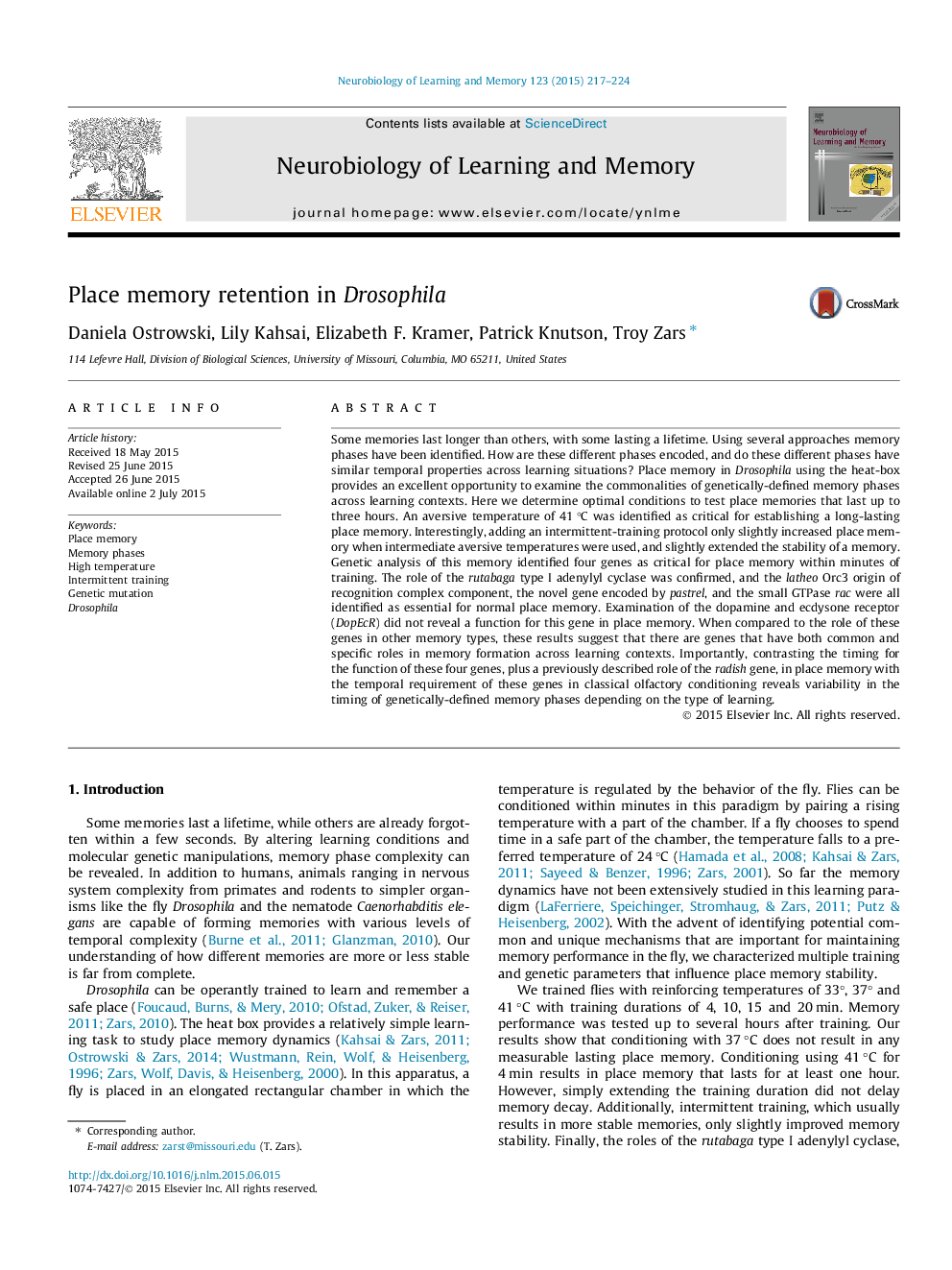| کد مقاله | کد نشریه | سال انتشار | مقاله انگلیسی | نسخه تمام متن |
|---|---|---|---|---|
| 936463 | 1475152 | 2015 | 8 صفحه PDF | دانلود رایگان |

• Lasting place memory in Drosophila requires aversive temperature of 41 °C.
• Intermittent training increases memory stability only under specific conditions.
• Rutabaga, latheo, and pastrel mutant flies have lower place memory performance.
• Reduction in rac function increases place memory.
• Genetically defined memory phases have different temporal properties.
Some memories last longer than others, with some lasting a lifetime. Using several approaches memory phases have been identified. How are these different phases encoded, and do these different phases have similar temporal properties across learning situations? Place memory in Drosophila using the heat-box provides an excellent opportunity to examine the commonalities of genetically-defined memory phases across learning contexts. Here we determine optimal conditions to test place memories that last up to three hours. An aversive temperature of 41 °C was identified as critical for establishing a long-lasting place memory. Interestingly, adding an intermittent-training protocol only slightly increased place memory when intermediate aversive temperatures were used, and slightly extended the stability of a memory. Genetic analysis of this memory identified four genes as critical for place memory within minutes of training. The role of the rutabaga type I adenylyl cyclase was confirmed, and the latheo Orc3 origin of recognition complex component, the novel gene encoded by pastrel, and the small GTPase rac were all identified as essential for normal place memory. Examination of the dopamine and ecdysone receptor (DopEcR) did not reveal a function for this gene in place memory. When compared to the role of these genes in other memory types, these results suggest that there are genes that have both common and specific roles in memory formation across learning contexts. Importantly, contrasting the timing for the function of these four genes, plus a previously described role of the radish gene, in place memory with the temporal requirement of these genes in classical olfactory conditioning reveals variability in the timing of genetically-defined memory phases depending on the type of learning.
Journal: Neurobiology of Learning and Memory - Volume 123, September 2015, Pages 217–224